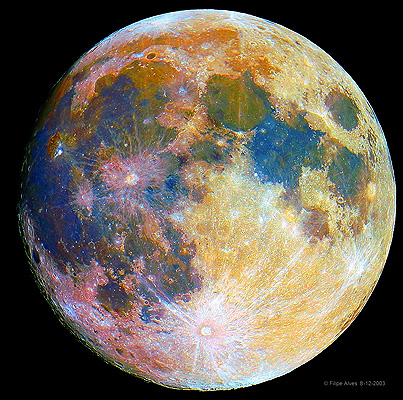Difference between revisions of "January 28, 2004"
| Line 11: | Line 11: | ||
<table width="100%" border="0" cellpadding="8"> | <table width="100%" border="0" cellpadding="8"> | ||
<tr> | <tr> | ||
| − | <td><div align="center | + | <td><div align="center"><p>Image Credit: [mailto:filipe@pixmix.tv Filipe Alves]</p></div></td> |
</tr> | </tr> | ||
</table> | </table> | ||
Revision as of 14:37, 18 January 2015
Outrageous Lunar Colors
Image Credit: Filipe Alves |
|
Outrageous Lunar Colors All observers know the Moon is almost entirely a monochrome world with only subtle hints of color. And we have all seen the colorful lunar images composited from spacecraft data acquired through red, blue and green filters. But this extravagantly colored Moon is remarkable for being obtained by an amateur in Lisbon, Portugal who used a normal digital camera, with no filters. As with the NASA images the colors represent variations of the composition of surface soils. The biggest distinction is between the yellow to pink shading of the lunar highlands, and the blues and yellow-blues of the maria. The darkest blue regions - Mare Tranquillitatis and Sinus Midii - have the most titanium-rich mare lavas, and the sharp color boundaries in maria Serenitatis and Imbrium delineate lava flows with somewhat different compositions. Rays from Tycho, near Stevinus, Thales and Anaxagoras stand out as spokes of brightness. Congratulations, Filipe! Technical Details: Related Links: Tomorrow's LPOD: Nodding Moon |
Author & Editor: Technical Consultant: A service of: |
COMMENTS?
Register, and click on the Discussion tab at the top of the page.




